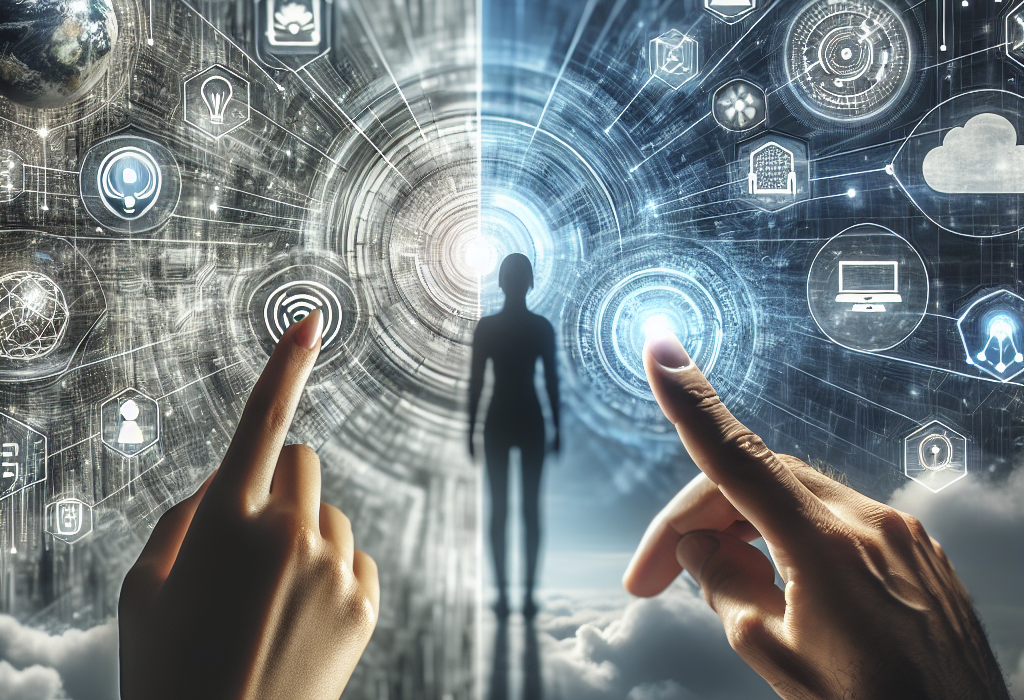From Smartphones to Smart Everything: The Next Tech Paradigm Shift
In the early 2000s, the introduction of smartphones revolutionized the way we interact with technology and each other. Equipped with powerful processors, high-resolution touchscreens, and connectivity capabilities, smartphones condensed a multitude of everyday functions into a single, portable device. From communication to navigation to entertainment, life quickly became intertwined with these pocket-sized technological marvels. Now, we are on the brink of another technological metamorphosis: the shift from smartphones to smart everything.
The Rise of the Internet of Things (IoT)
The Internet of Things, or IoT, is at the heart of this new technological evolution. IoT refers to the vast network of interconnected devices that communicate and exchange data with one another. While smartphones were the mainstream gateway to the digital world, IoT expands this connectivity to billions of other everyday objects — from household appliances to health monitors to smart cities.
Smart Homes: The Next Frontier
No longer a concept confined to science-fiction, smart homes are becoming increasingly viable and affordable. Intelligent voice assistants like Amazon’s Alexa, Google Home, and Apple’s Siri are just the beginning. Today’s smart home encompasses everything from lighting systems and thermostats to security cameras and even kitchen appliances. For instance, users can preheat their ovens from their car, control their lighting and air conditioning through voice commands, and remotely monitor their homes through security cameras, all by leveraging interconnected devices.
Energy Efficiency and Sustainability
Smart homes also offer significant gains in energy efficiency. Advanced thermostats can learn a household’s schedule and adjust heating and cooling accordingly, drastically reducing energy consumption. Smart lighting systems can dim or turn off lights in unoccupied rooms, while automated irrigation systems adjust water usage based on weather forecasts, reducing waste. This level of control not only enhances convenience but also promotes sustainability.
Healthcare: A Smarter Approach
Healthcare is another sector witnessing profound changes due to the integration of smart technology. Wearable devices such as smartwatches and fitness trackers enable continuous health monitoring, collecting data on metrics like heart rate, sleep patterns, and physical activity. This continuous flow of data can be shared with healthcare providers in real-time, facilitating early diagnosis and personalized treatment plans.
Furthermore, smart inhalers are emerging to help individuals manage respiratory conditions like asthma through real-time tracking and reminders. Connected implantable devices can monitor and even treat conditions like arrhythmias or chronic pain.
The Evolution of Smart Cities
The concept of smart cities is an ambitious vision of urban development optimized through technology. Equipped with sensors and connected devices, smart cities aim to streamline everything from traffic control to waste management to energy distribution.
For instance, smart traffic lights can adapt their timing based on real-time traffic conditions, reducing congestion and improving fuel efficiency. Waste bins equipped with IoT sensors indicate when they are full, allowing more efficient waste collection. Smart grids can optimize energy distribution and usage based on consumption patterns, leading to more reliable and eco-friendly urban energy management.
The Business Landscape: Industry 4.0
The industrial sector is undergoing its own revolution known as Industry 4.0, characterized by the integration of IoT, artificial intelligence (AI), and big data analytics. In manufacturing, smart machinery equipped with sensors can predict when maintenance is required, preventing costly downtime. Supply chains become more transparent and efficient through real-time tracking of goods, reducing waste and improving delivery times.
Challenges and Considerations
While the transition to a connected world offers numerous benefits, it also brings challenges. Data security and privacy concerns are paramount, given the vast amounts of information these devices collect and share. Robust cybersecurity measures and clear regulatory frameworks are essential to protect consumers’ data and foster trust in smart technology.
Moreover, the digital divide remains a critical issue. As technology advances, ensuring that all socioeconomic groups have access to smart technologies will be crucial to preventing further inequality.
Conclusion
From smartphones to smart everything, the next tech paradigm shift promises to reshape our lives in unprecedented ways. Encompassing smart homes, cities, healthcare, and industrial spaces, the IoT era heralds a future where technology is seamlessly integrated into every aspect of daily life. Balancing innovation with security and accessibility will be crucial as we navigate this exciting new frontier. Ultimately, the success of this paradigm shift will lie in its ability to enhance human well-being while promoting a more sustainable and connected world.

